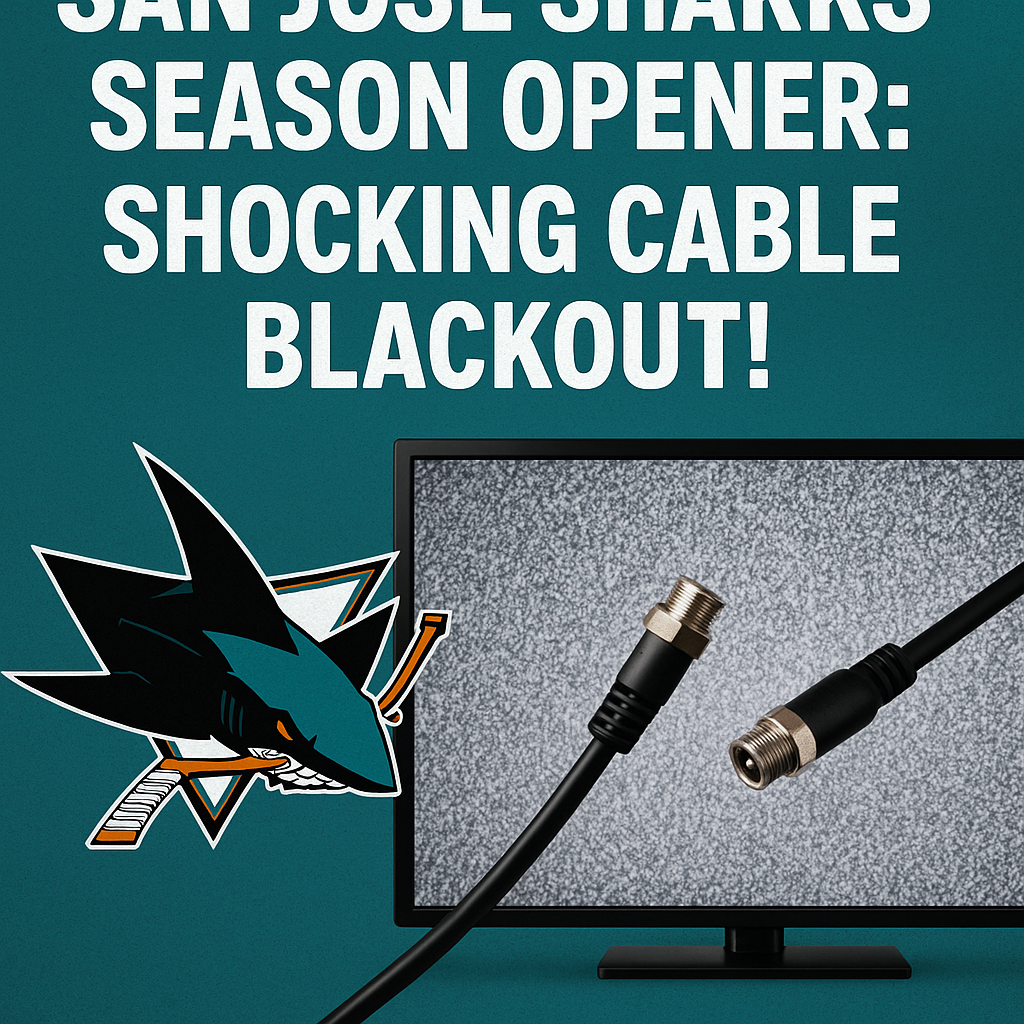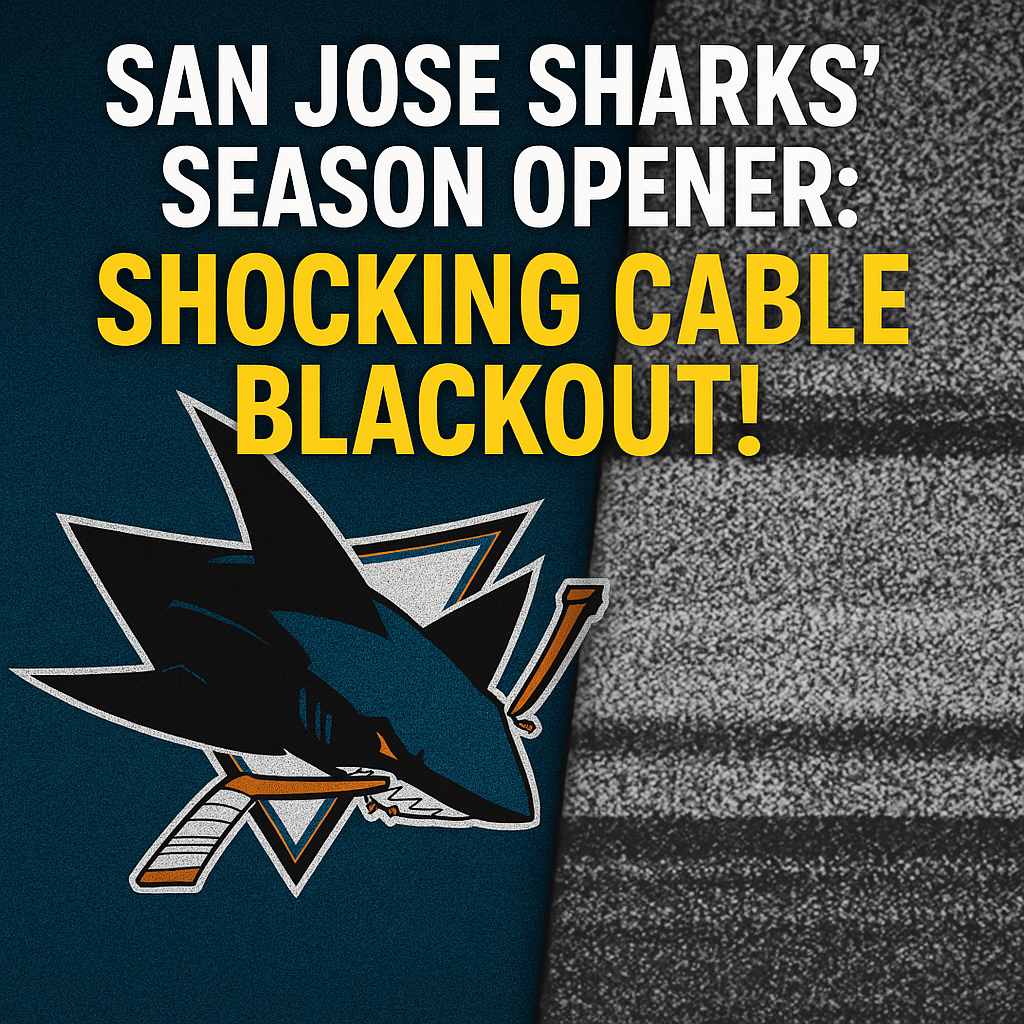San Jose Sharks’ Season Opener: Shocking Cable Blackout!
San Jose Sharks’ Season Opener: Shocking Cable Blackout!
The San Jose Sharks’ season opener took an unexpected twist this year with a shocking cable blackout that left fans scrambling for alternatives to catch the action. As the Sharks hit the ice for their much-anticipated game, the disruption caused quite a stir among viewers, highlighting the ongoing challenges associated with sports broadcasting in a rapidly changing media landscape.
The Impact of Broadcasting Changes

The Sharks’ initial game against their rivals was not just a test of skill on ice but also a test of the new broadcasting agreements that have kept fans guessing. Historically, Shark fans have relied on a mix of local cable and streaming services to catch their team’s games. However, this season, the alliance with ESPN and TNT prioritized national broadcasts, leaving regional fans concerned about availability.
Many fans expressed their frustration on social media, highlighting how the blackout affected their plans to cheer for their team. A prominent fan lamented, “It’s frustrating to be ready for the game, only to find out that you can’t watch it. Just when I thought they were making it easier to follow the Sharks, it feels like a step backward.” This sentiment has been echoed across various platforms, as fans voiced their displeasure about the accessibility of local games.
Navigating the Streaming Landscape
The cable blackout creates a complex situation for the Sharks’ management and fans alike. With media consumption habits shifting toward streaming platforms, how teams and networks address these changes will determine future engagement with their audiences. According to analysis from Mercury News, the NHL aims to appeal to a younger demographic that prefers online streaming services over traditional cable packages.
Despite the blackout, some fans found alternative methods to connect with the game through unofficial streaming options, which have sparked concerns about the legality and safety of such sources. The market for pirated streams continues to thrive, presenting a dilemma for both fans and the NHL. As a compromise, exploring local streaming subscriptions could be a future solution, but the immediate challenge remains finding a reliable way to watch games.
Discussion Among Stakeholders
In navigating this situation, stakeholders—including the NHL, local broadcasters, and the fans—must clearly communicate their intentions and expectations regarding game availability. According to a report from SFGate, the shift to national coverage appears aimed at increasing the league’s visibility but may inadvertently disenfranchise dedicated regional audiences. It sparks an ongoing debate about where team’s loyalties truly lie: with the loyal local fanbase or a broader, national audience.
Interestingly, feedback from broader media discussions suggests a split opinion among fans. While some enjoy the broader sports narrative fostered by national broadcasts, others feel disconnected from the local teams that represent their community. This duality speaks to a much larger conversation about the relationship between sports, media, and local cultures.
Weighing Pros and Cons
On one hand, national broadcasts can elevate the profile of franchises like the Sharks, securing better sponsorship deals and greater national attention. Meanwhile, on the flip side, local fans face inconveniences that detract from their experience and loyalty. Addressing these concerns will require the NHL and its partners to find a balance that both promotes the league and nurtures a dedicated local following.
For many fans, missing a critical game moment can feel like losing a piece of their community. Engaging in local watch parties or social media interactions may help mitigate some of that loss, but they don’t replace the feeling of being part of the live sporting experience.
The Future Landscape of Sports Broadcasting
As the dust settles from the Sharks’ season opener blackout, it raises critical questions for the future of sports broadcasting. Will dedicated fans find sustainable ways to connect with their teams? How will local teams adapt to the growing preference for streaming and media accessibility?
The answers remain uncertain. However, one thing is clear: the intersection of sports and technology will continue to evolve, reshaping how fans experience their favorite teams. The Sharks, and indeed the entire NHL, are at a pivotal moment that could set the course for future engagements in the years to come. Providing a seamless viewing experience while keeping local connections strong is of paramount importance, and the coming weeks may reveal how the league intends to address the concerns voiced by many Sharks fans nationwide.
In conclusion, the San Jose Sharks’ season opener showcased both the excitement of live sports and the complications of a transforming media landscape. Finding a path forward that respects fan loyalty and embraces innovation will be crucial—not just for the Sharks but for the entire NHL. As the season progresses, how these themes unfold will be closely watched by fans and analysts alike.








